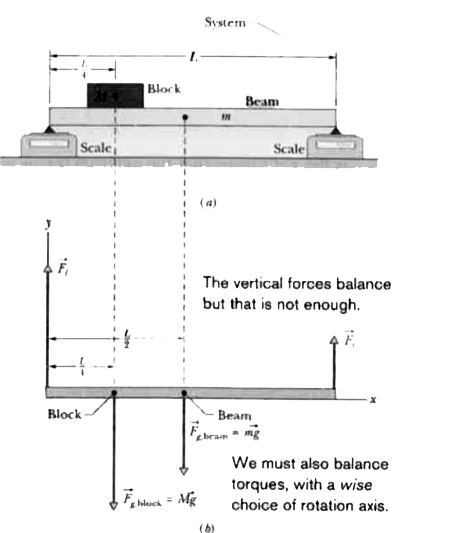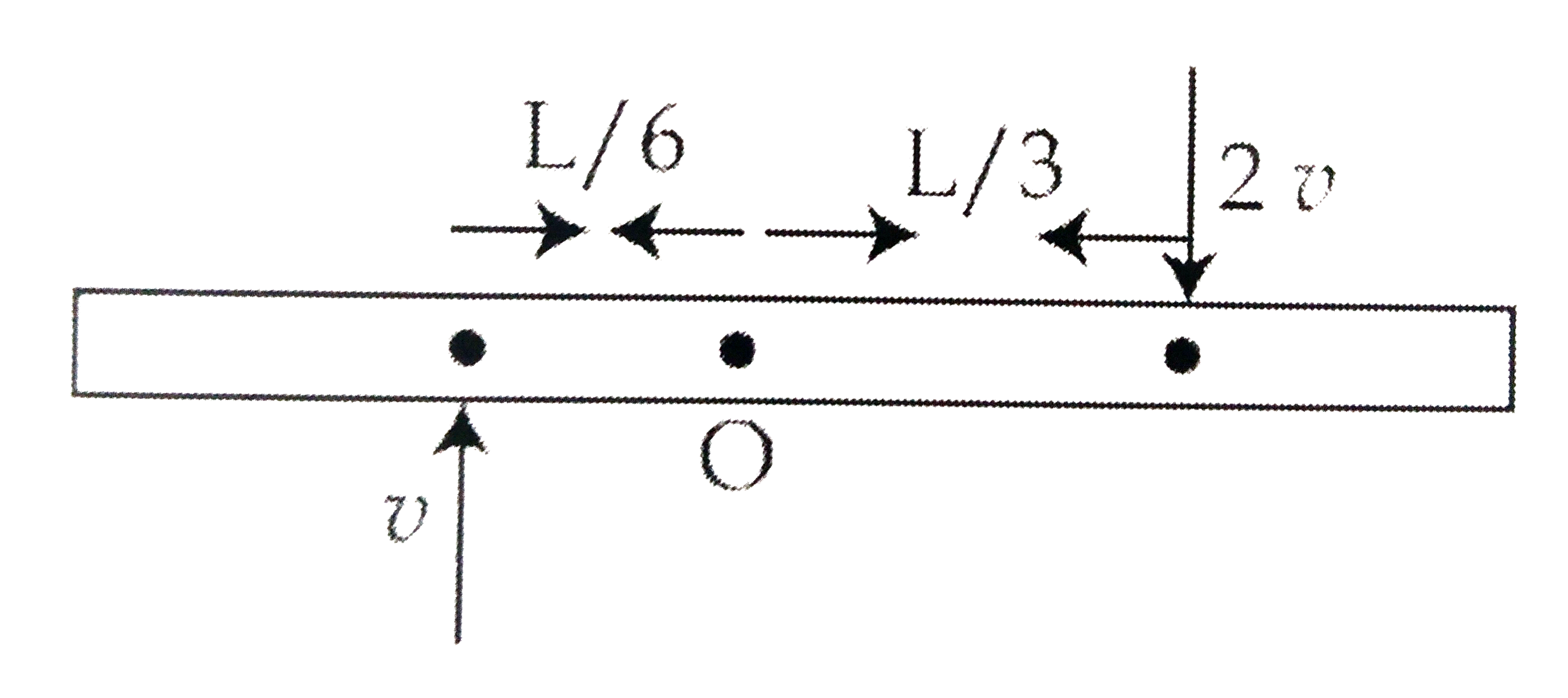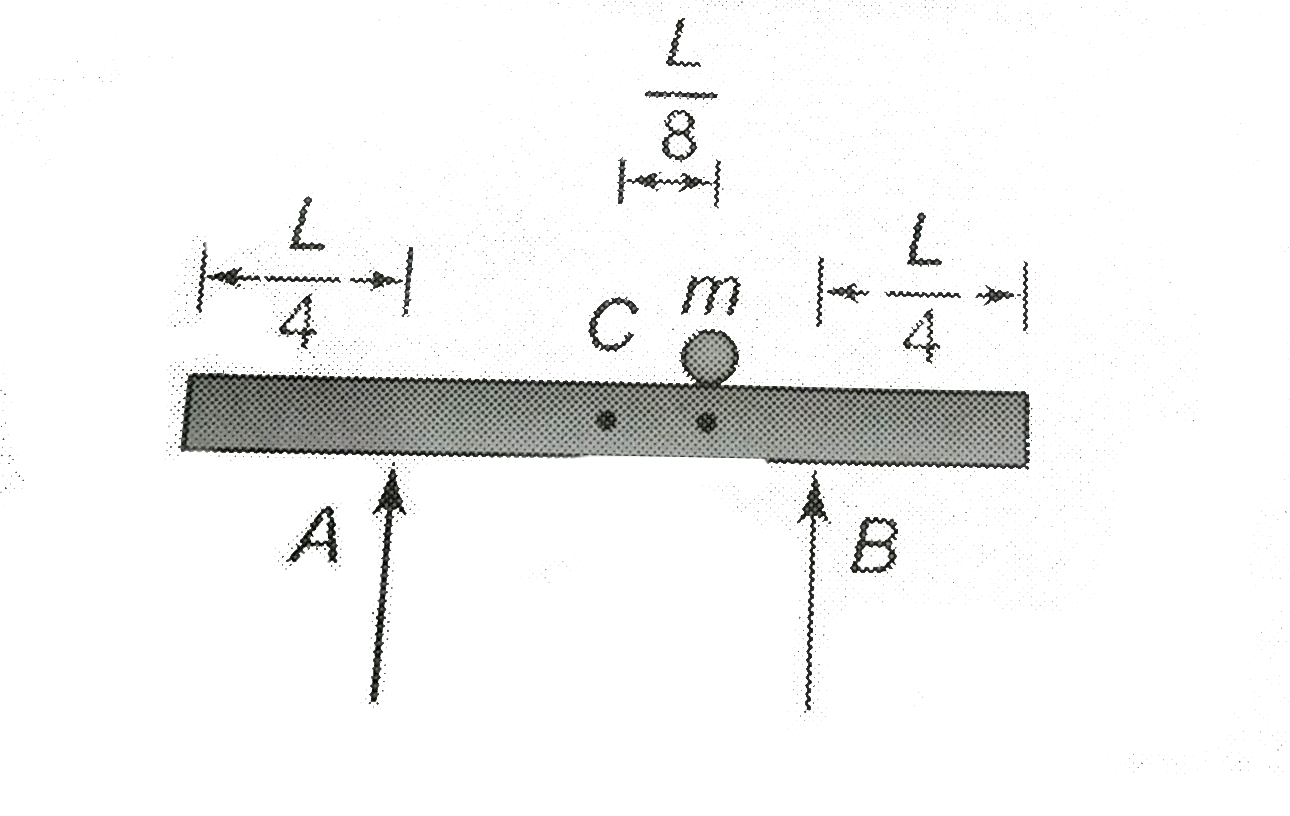a uniform beam, of length L and mass m = 1.8 kg, is at rest on two scales. A uniform block, with mass M = 2.7 kg, is at rest on the beam, with its center a distance L/4 from the beam's left end. What do the scales read?
The first steps in the solution of any problem about static equilibrium are these: Clearly, define the system to be analyzed and then draw a free-body diagram of it, indicating all the forces on the system. Here, let us choose the system as the beam and block taken together. Then the forces on the system are shown in the free body diagram of Fig. 11-15b. (Choosing the system takes experience, and often there can be more than one good choice.) Because the system is in static equilibrium, we can apply the balance of forces equations (Eqs. 11-25 and 11-26) and the balance of torques equation (Eq. 11-27) to it.
Calculations: The normal forces on the beam from the scales are →Fl on the left and →Fr on the right. The scale readings that we want are equal to the magnitudes of those forces. The gravitational force →Fg.beam on the beam acts at the beam.s center of mass and is equal to m→g. Similarly, the gravitational force →Fg. block on the block, acts at the block.s center of mass and is equal to M→g.

However, to simplify Fig. 11-15b, the block is repre sented by a dot within the boundary of the beam and vec →Fg. block is drawn with its tail on that dot. (This shift of the vec →Fg. block along its line of action does not alter the torque due to →Fg. block about any axis perpendicular to the figure.) The forces have no x components, so Eq. 11-25 (Fnet,y.=0) provides no information. For the y components, Eq. 11-26 (Fnet,y.=0) gives us
F1+Fr−Mg−mg=0 (11-28)
This equation contains two unknowns, the forces Fl and Fr so we also need to use Eq. 11-27, the balance of torques equation. We can apply it to any rotation axis perpendicular to the plane of Fig. 11-15. Let us choose a rotation axis through the left end of the beam. We shall also use our general rule for assigning signs to torques: If a torque would cause an initially stationary body to rotate clockwise about the rotation axis, the torque is negative. If the rotation would be counterclockwise, the torque is positive. Finally, we shall write the torques in the form r⊥F, where the moment arm r⊥ is 0 for →FlL/4 for M→g,L/2 for m→g, and L for →F.
We now can write the balancing equation (τnet,z=0) as
(0)(Fl)−(L/4)(Mg)−(L/2)(mg)+(L)(Fr)=0
which gives us
Fr=14Mg+12mg
=14(2.7kg)(9.8m/s2)+12(1.8kg)(9.8m/s2)
=15.44N≈15N
Now, solving Eq. 11-28 for Fi and substituting this result, we find
Fl=(M+m)g−Fr
=(2.7kg+1.8kg)(9.8m/s2)−15.44N
=28.66N≈29N
Notice the strategy in the solution: When we wrote an equation for the balance of force components, we got stuck with two unknowns. If we had written an equa tion for the balance of torques around some arbitrary axis, we would have again gotten stuck with those two unknowns. However, because we chose the axis to pass through the point of application of one of the unknown forces, here →Fl we did not get stuck. Our choice neatly eliminated that force from the torque equation, allow ing us to solve for the other unknown force magnitude Fr. Then we returned to the equation for the balance of force components to find the remaining unknown force magnitude.
Topper's Solved these Questions
- BOOK - RESNICK AND HALLIDAYCHAPTER - RIGID BODY DYNAMICS-IIEXERCISE - EXAMPLE1videos
RIGID BODY DYNAMICS-II
- BOOK - RESNICK AND HALLIDAYCHAPTER - RIGID BODY DYNAMICS-IIEXERCISE - CHECKPOINT4videos
RIGID BODY DYNAMICS-II
- BOOK - RESNICK AND HALLIDAYCHAPTER - RIGID BODY DYNAMICS - IEXERCISE - PRACTICE QUESTIONS (INTEGER TYPE))3videos
RIGID BODY DYNAMICS - I
- BOOK - RESNICK AND HALLIDAYCHAPTER - TEMPERATURE, ZEROTH LAW OF THERMODYNAMICS AND THERMAL EXPANSION EXERCISE - PRACTICE QUETIONS (Integer Type)4videos
TEMPERATURE, ZEROTH LAW OF THERMODYNAMICS AND THERMAL EXPANSION
Similar Questions
The radius of gyration of a uniform rod of mass m and length l about an axis perpendicular to its length and at distance l4 from its one end will be
View SolutionOne end of a thin uniform rod of length L and mass M1 is rivetted to the center of a uniform circular disc of radius r and mass M2 so that both are coplanar. The center of mass of the combination from the center of the disc is (Assume that the point of attachment is at the origin)
1) L(M1+M2)/2M1
2) LM1/2(M1+M2)
3) 2(M1+M2)/LM1
4) 2LM1/(M1+M2)View Solution
Knowledge Check
- Question 1 - Select One
A man of mass m stands at the left end of a uniform plank of length L and mass M, which lies on a frictionaless surface of ice. If the man walks to the other end of the plank, then by what distance does the plank slide on the ice?
ALBMLm+MCmLMDmLm+M - Question 2 - Select One
An elevator accelrates upward at a constant rate. A uniform string of length L and mass m supports a small block of mass M that hangs from the celling of the elevator. The tension at distance l from the celling is T. the accelration of the elegvator is
ATM+m−ml/L−gBT2M+m−ml/L+gCTM+ml/L−gDT2M−m+ml/L−g - Question 3 - Select One
A uniform rope of length 20m and mass 5kg is hanging vertically from a rigid support. A block of mass 4kg is attached to the free end. The wave length of the transverse wave pulse at the lower end of the rope is 0.04 m. The wavelength of the same pulse as it reaches the top is
A0.06mB0.12mC1.5mD2.2m
Two uniform solid of masses m1 and m2 and radii r1 and r2 respectively, are connected at the ends of a uniform rod of length l and mass m. Find the moment of inertia of the system about an axis perpendicular to the rod and passing through a point at a distance of a from the centre of mass of the rod as shown in figure.
 View Solution
View SolutionA thin uniform bar of length L and mass 8m lies on a smooth horizontal table .Two point masses m and 2 m are moving in the same horizontal plane from opposite sides of the bar with speeds 2v and v respectively .The masses stick to the bar after collision at a distances L3andL6 respectively from the center of the bar if the bar starts rotating about its center of mass as result of collision the angular speed of the bar will be
 View Solution
View SolutionA uniform board of mass M and length L rests on two spring scales. A person of mass m stands at a distance l from one end as shown in Fig. (a) The board and person are at rest. What is the reading of the two scales?
View SolutionA uniform rod of mass M and length L rests on two supports. A ball of mass m=M/3 is placed at distance L/8 from the center as shown. Find reactions at supports.
 View Solution
View SolutionA uniform rod of length l and mass 2m rests on a smooth horizontal table. A point of mass m moving horizontally at right angle to the rod with velocity v collides with one end of the rod and sticks to it, then:
View Solution
